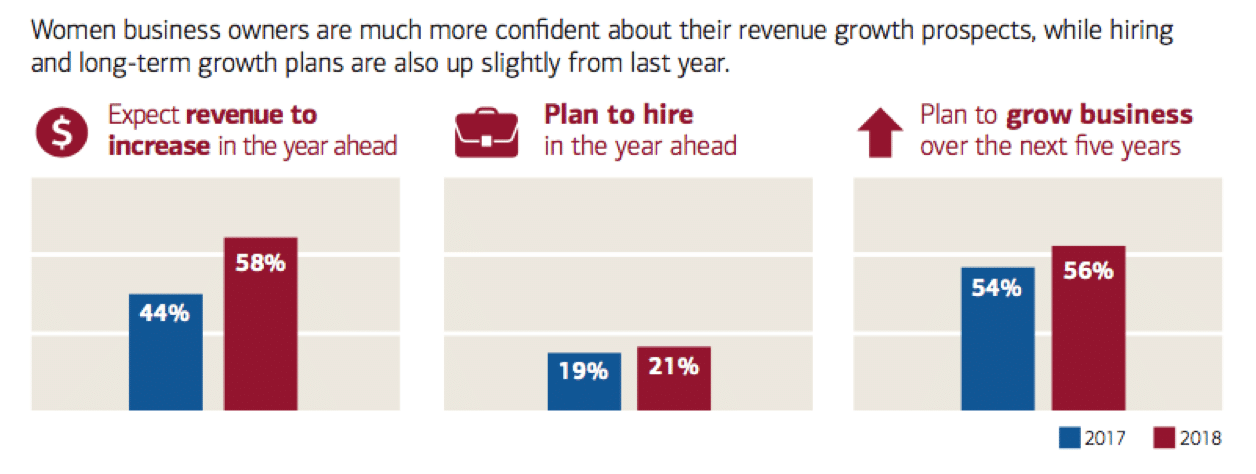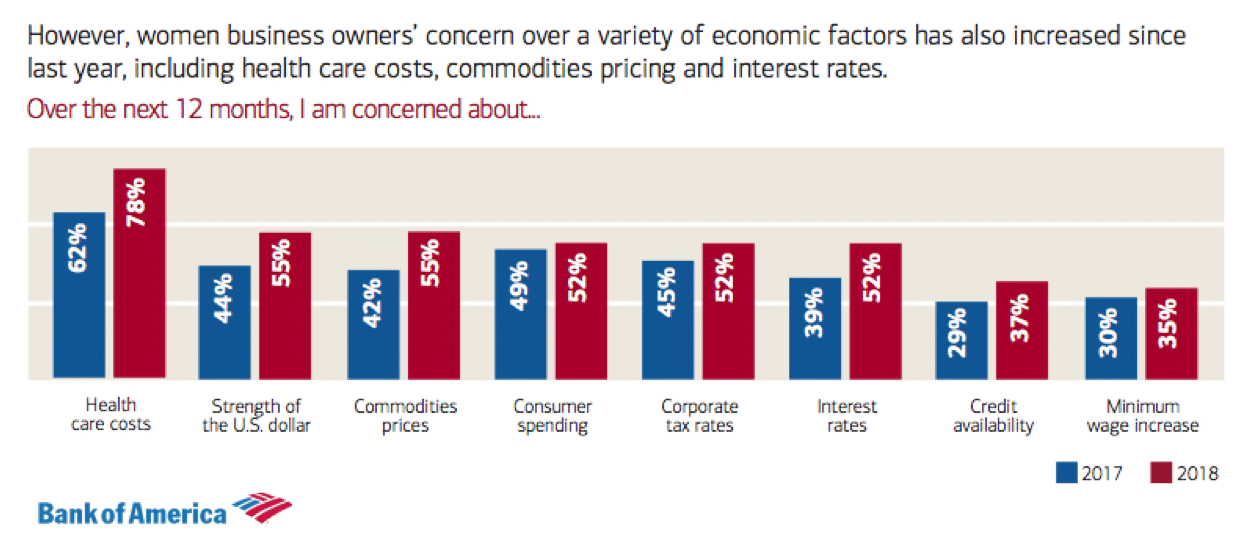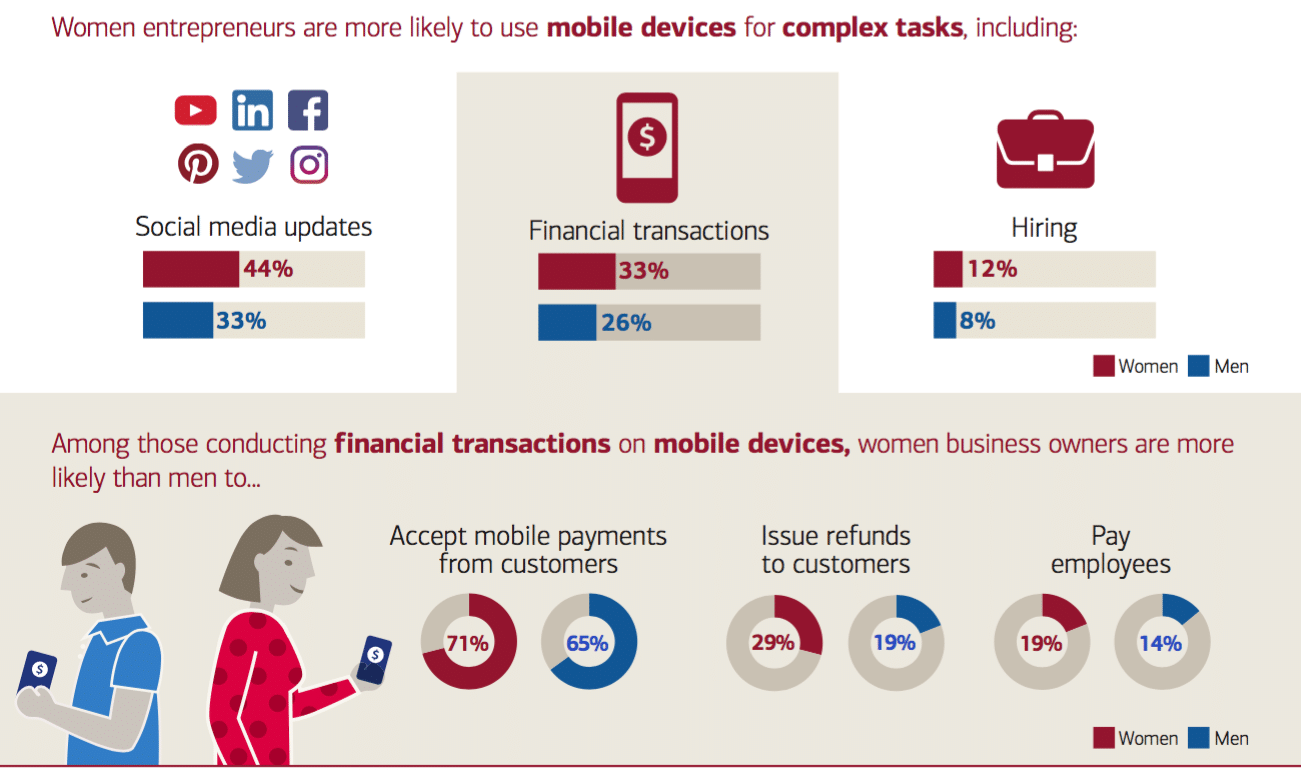Women entrepreneurs are increasingly optimistic about the future—and this sector is leading the digital transformation, according to the 2018 Women Business Owner Spotlight from Bank of America.
The annual study of more than 1,000 entrepreneurs across the country found increased confidence toward future revenue growth, as 58 percent of women entrepreneurs expect their revenue to increase in the year ahead—up 14 percentage points from 2017. Optimism toward long-term growth, hiring and the economy is also on the rise.
The study found 56 percent of women plan to grow their business over the next five years (up 2 percentage points from 2017). In the shorter term, 21 percent of women plan to hire more employees (also up 2 percentage points from 2017). Continuing this optimistic trend, women business owners’ economic projections have been increasingly more positive since 2016:
- Forty-nine percent expect their local economy to improve (up 4 percentage points from 2017 and up 12 percentage points from 2016).
- Forty-eight percent expect the national economy to improve (up 4 percentage points from 2017 and up 23 percentage points from 2016).
“When it comes to small business, women entrepreneurs are at the forefront of the digital transformation,” said Sharon Miller, managing director and head of Small Business at Bank of America, in a news release. “It is exciting to see how they are innovating and leveraging mobile tools to help their businesses succeed. Their increased optimism about the future and the potential for hiring and growth is also very encouraging.”
Women business owners leading digital transformation
With half of small business owners foreseeing a complete transition to digital payments in the next five years, it is women who are leading the charge in using mobile devices to process payments and manage other transactions. The survey found that 33 percent of women entrepreneurs use a mobile device to process digital financial transactions, compared to 26 percent of men. Of those conducting business transactions on mobile devices, women business owners lead men on specific-use cases as well:
- Accepting mobile payments from customers (71 percent of women versus 65 percent of men).
- Issuing refunds to customers (29 percent of women versus 19 percent of men).
- Paying employees (19 percent of women versus 14 percent of men).
Beyond digital payments, women entrepreneurs are also ahead of the curve in managing other aspects of their business on their mobile devices, including social media updates and hiring:
- Social media updates (44 percent of women versus 33 percent of men).
- Hiring (12 percent of women versus 8 percent of men).
Barriers to business ownership and accessing capital
This year’s survey also examined women’s perspectives on barriers to establishing and financing a small business—including the extent to which gender bias may play a role. Sixty-one percent of women entrepreneurs say it was more difficult for them to get their business off the ground than it was for male business owners they know. Sixty-eight percent say women face greater challenges than men when it comes to accessing capital.
Despite this, a strong majority believe conditions for women-owned businesses to start up and succeed have gotten better over the long term, with 84 percent reporting their belief that access to capital for women has improved in the last 10 years.
To continue progress in this area, the greatest number of women (42 percent) believe gender-blind financing (where the gender of an applicant seeking investment or loan funding is not known) has the greatest potential to level the playing field for equal access to capital. Runners-up on the list were more opportunities for education and training (24 percent) and access to government loan programs (16 percent).
“Access to capital is key to small business growth, but research shows that it can be tougher for women entrepreneurs than for men,” continued Miller. “The fact that the overwhelming majority of women business owners see progress in the last 10 years is encouraging. Bank of America intends to do our part to keep the momentum going by continuing to support and lend to women-owned businesses because their talents, ideas and leadership in the marketplace are essential.”











